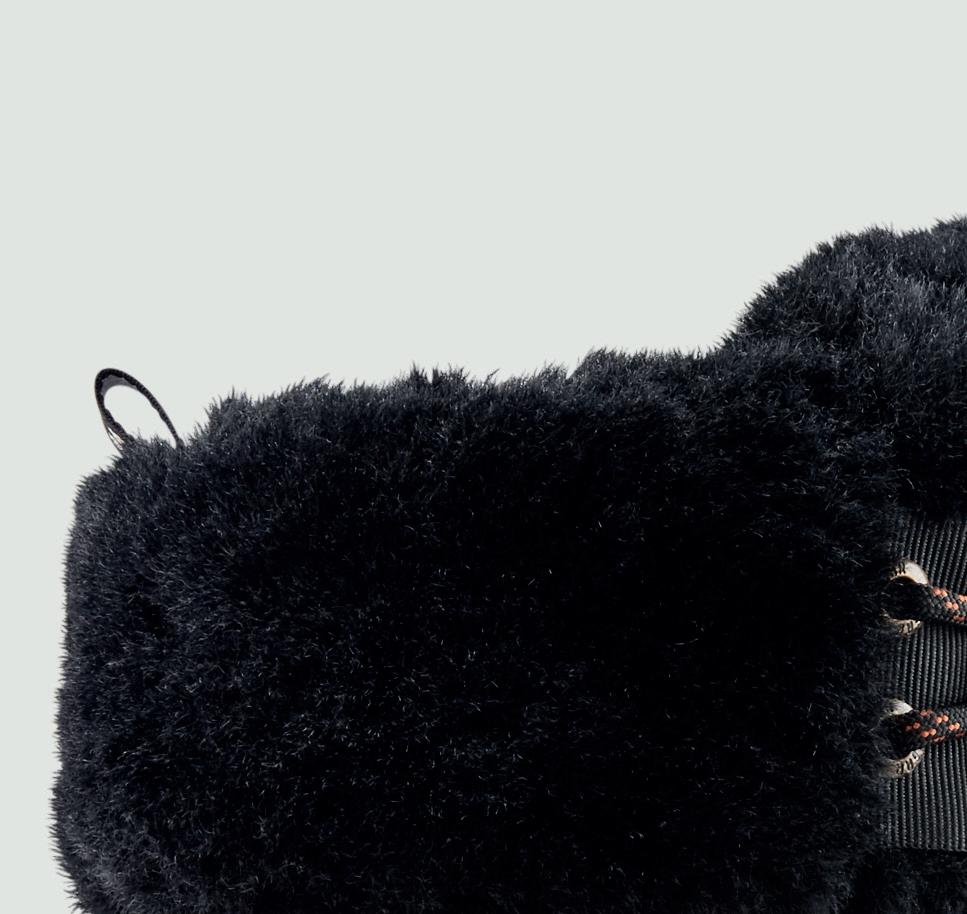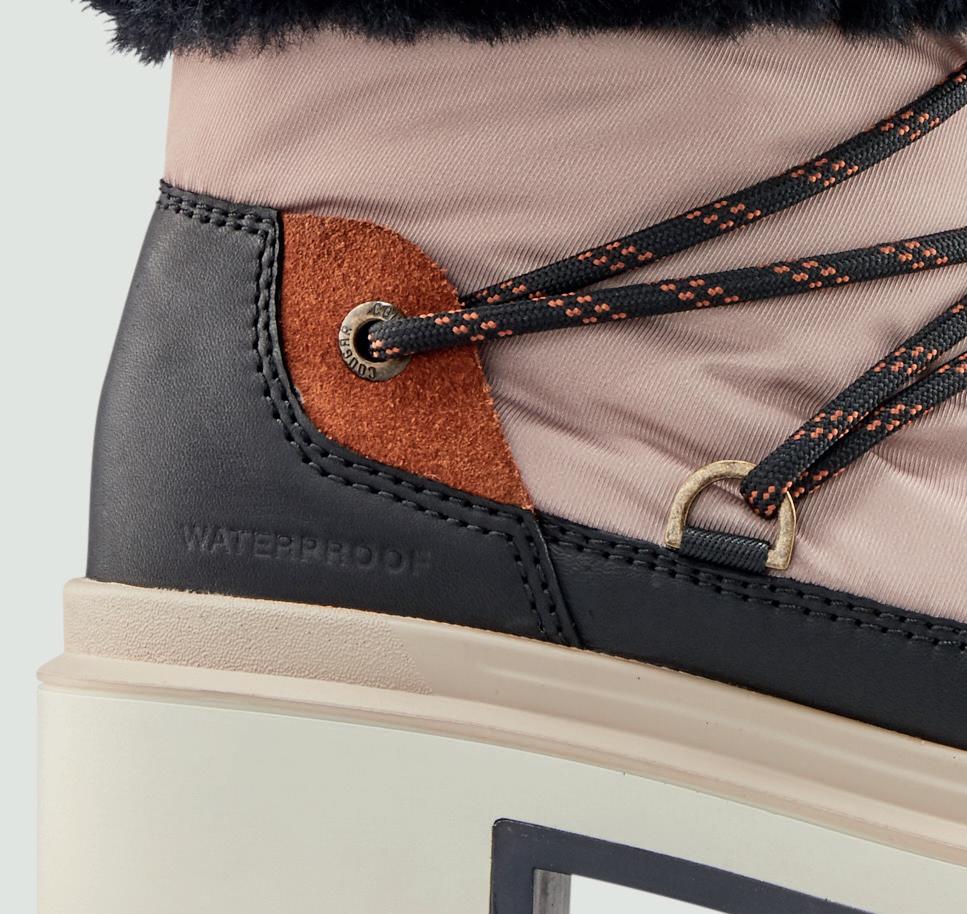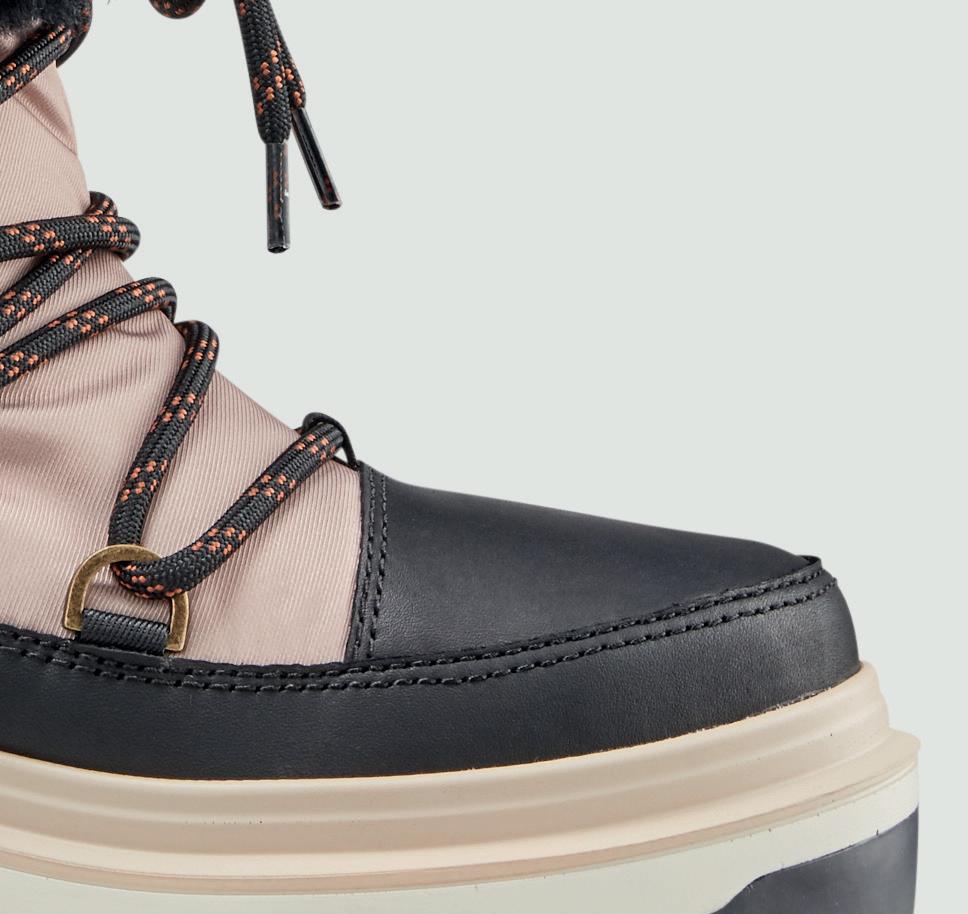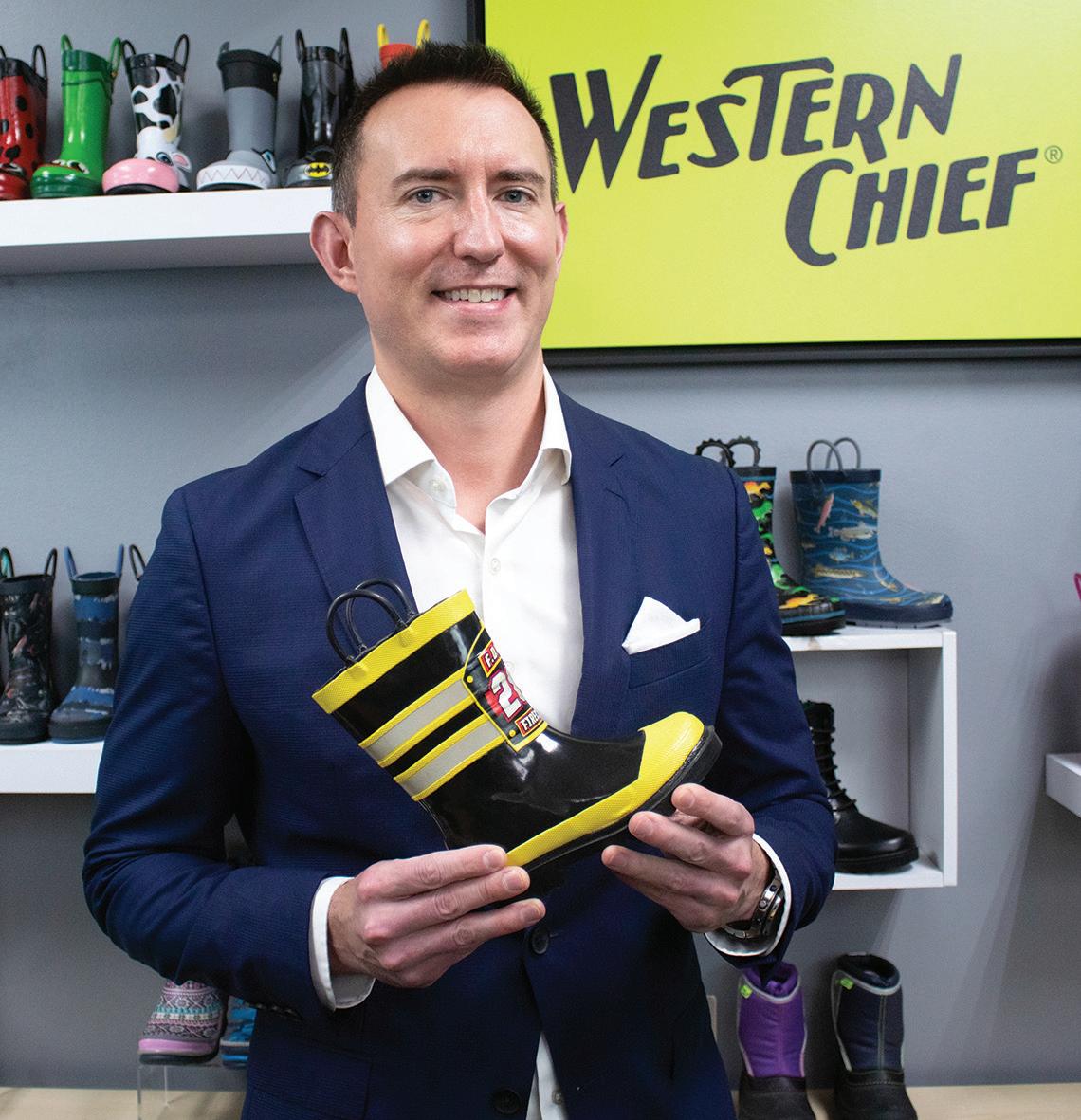
15 minute read
Sound Strategy
Q&A
BY GREG DUTTER
SOUND STRATEGY
Karl Moehring, CEO of Washington Shoe Company, makers of Chooka, Western Chief and Staheekum, on the power of corporate culture, managing through supply chain chaos and marching toward the $100 million sales goal.
FOR THE RECORD, Washington Shoe Company is a 130-yearold, fourth-generation-run, family-owned business. That’s a lot of accumulated footwear and family history—years and years layered like sedimentary rock. It wouldn’t be surprising if the Kent, WA-based company was firmly set in its ways. And in some respects it was, which is something CEO Karl Moehring has addressed since taking the day-to-day reins from his father, Robert Moehring, in 2015. From a top-down approach, Moehring believes if Washington Shoe Company is to continue to grow and thrive in the years ahead, it must be able to adapt to a rapidly changing industry landscape—and the best way to do that is to develop a corporate culture that attracts, retains and rewards top-notch talent.
“I’m really passionate about our culture, and I’m always willing to try new things to make it an even better place to work,” Moehring says. “I geek out on that stuff. I read as much as I can about it in books and in magazines like the Harvard Business Review, and when I’m socializing with our team, I’m always asking, ‘Hey, what do you think about trying this, doing that, etc.’”
One such recent read was No Rules Rules by Reed Hastings, which is about Netflix’s culture and how the streaming service focuses on talent density by paying top dollar to attract the best people, as well as its practice of 360 feedback throughout the organization so employees can voice concerns and ideas. “We’ve incorporated 360 feedback into our culture—everyone can pipe up any time, and we also hold quarterly events,” Moehring says. “We’re from the Northwest, so we’re kind of passive-aggressive. We want to break that mold a bit and be a little more New York style.”
Another recent read was Delivering Happiness, the late Zappos founder Tony Hsieh’s corporate culture manifesto on the power of a joyful workplace. Moehring says the books are yin and yang in regard to their philosophies on creating a good corporate culture. “Tony’s is more about how everyone should have a good time, all the time, whereas the other one puts a little more bite to it: We want to you
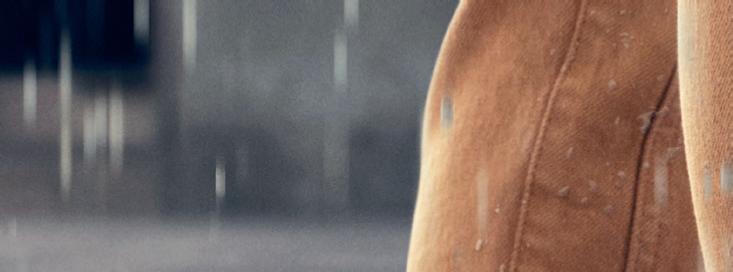
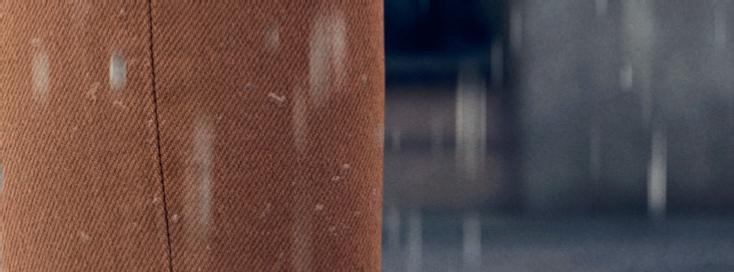
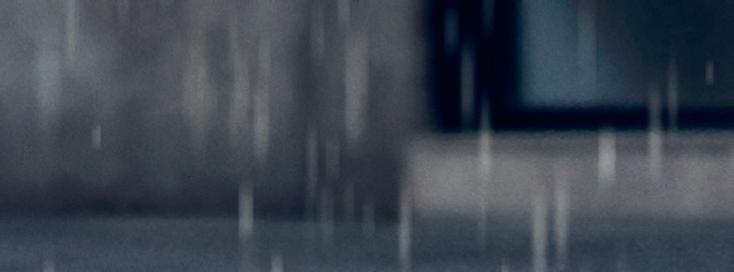
have fun, but we want to hold you a little more accountable,” he says. “I’m trying to find the balance between these two books and blend that into our culture at Washington Shoe Company.”
So far, so good. Moehring believes the efforts to make Washington Shoe Company a happy and collaborative workplace have already paid enormous dividends. In fact, he credits those improvements as a key reason the company has weathered the pandemic as well as it has so far. (Washington Shoe Company registered record sales in 2020 and, despite massive supply chain woes, this past year came in only 15 percent short of its aggressive budget projections.) Moehring attributes the success largely to how its 65 employees rallied together in a challenging period. “A lot of our people had issues with childcare and couldn’t come into the office or couldn’t work at all, and other people stepped up for them,” he says. “Or it was salespeople who kept bringing in orders even though we struggled to get the inventory. Everyone has just rolled with the punches and leveled up.” Moehring says the inspiring performance proves that his approach to building corporate culture has merit. “It tells me we’re doing it the right way, which is something that we’ve really focused on over the last five years,” he says. “Not that we saw it coming, but the perfect weapon against the pandemic is a great corporate culture.”
Moehring believes a strong corporate culture will be even more important going forward. In order for the company to meet its growth projections, it must attract and retain the best talent—something that has become a challenge since the onset of the Great Resignation/Realization. The pandemic has upended the entire planet, but perhaps no more so than in the way billions of people are choosing to work. Attracting good people has gotten exponentially more difficult. “In the past, we’d post a job and would generally receive 100 applications, and now it’s like three,” Moehring says. “So we’ve had to find new ways to recruit people—like headhunters, which we never had to do before, and making sure our company is a place people love working.” He adds, “They’re going to have to really want to commute to that office, and the reasons are more than just salary. They’re going to have to like their coworkers, appreciate their boss, want flexibility and believe in the company’s mission and values. We’ve got to compete on all that.”
Again, so far, so good. Moehring believes his company’s upgraded efforts to attract and retain talent are working. For example, the first-ever Thanksgiving bonus was issued to employees this past year. “Money still works as a morale booster and motivator,” he says. “The extra funds helped out a lot of our people over the holidays.” Washington Shoe Company also continues to be accommodating in its work-from-home policy. “If, for example, a preschool gets shut down for two weeks, we’ll be very flexible so they can work around that,” he says. Then there are frequent team-building events. “We do regular Zoom happy hours and play games just to let everyone see a sense of normalcy,” he says, noting that during the lockdown period some employees got pretty depressed. “So we’re always trying to do bonding events.”
Indeed, the world has changed dramatically and quite likely permanently. Disruption is the new black, and even the best-laid plans now come with a Covid caveat. Still, Moehring is bullish about the future for Washington Shoe Company—starting with record sales projections for 2022. “We’re doing the right things to stabilize the supply chain as best we can and, while there will be shocks in the system, we’ve learned to roll with the punches as well as have our partners,” he says. He cites goals to diversify the company’s China sourcing base to include Vietnam and the U.S. over the next three years. Washington Shoe Company is also on track to hit its $100 million sales goal by 2026. However, none of that happens, he notes, without its talented team working in unison. “Our culture is the strongest it has ever been,” Moehring says, noting its latest quarterly employee feedback survey saw its highest ratings in five years. “That’s like the canary in the coal mine. It’s an indicator of what the staff is really feeling about the work they do here. I’m excited by what the future holds for Washington Shoe Company.”
How would you best describe the last two years?
Looking back at the dark days of February and March of 2020, we assumed it was going to be like the Great Depression and the year would be our worst in 130 years. That’s saying a lot, because when I first started working here about 20 years ago, we almost went through a bankruptcy, which was intense. But this has just been beyond. In hindsight, I’ll take the Financial Crisis over what we are dealing with now. It was a scary boogeyman, but it went away 18 months later after the Fed stepped in. There are no answers with this pandemic, really. Where is the endzone on this?
Can you see one in the distance?
It keeps moving out further. I thought we would be through the pandemic for the most part by now. But here we are, in the depths of it again with the Omicron wave. The last two years by far have been the most challenging I’ve ever faced.
OFF THE CUFF
What was the last show you streamed? Yellowstone. I binged all four seasons. Ted Lasso is excellent, too.
In what way has the pandemic changed your life most? I was a gym rat and once that shut, I picked up running. I was never a runner before and now I run three or four times a week in all seasons. I love it.
What might people be surprised to know about you? That I relieve my stress by gardening. I have a small yard in Seattle and I like doing maintenance: mowing, trimming the hedges…all that good stuff. While wearing our wellies, of course.
What did you want to be when you grew up? I grew up during Microsoft’s boom times, so I wanted to work for them as a programmer.
What is your favorite hometown memory? Seafair, the biggest summer event in Seattle. It’s like the only week that it’s sunny, and the hydroplane boat races and the Blue Angels flyover are just a great time. What was the best piece of business advice you ever received? From my father: honesty with everything, especially with partners, vendors, retailers and employees.
What are you most proud of? The culture being created at Washington Shoe Company.
What is your favorite word? New normal—just joking. I really don’t have one.
What is your least favorite word? New normal.
What is your motto? Make tomorrow better.
Yet the company registered its best sales year in history in 2020. What gives?
Everything worked. We conserved cash right away—earlier than what we were hearing in the industry. And that might be because we are based in Washington, which was more aggressive and shutdown early. We did a round of layoffs of about 15 percent of our staff. It was the toughest decision
I’ve ever made as CEO, but based on the information we were receiving, we felt it was the right decision. Fortunately, we were able to bring back the people who wanted to come back a few months later, and I think we have a stronger workforce today because of that turnover. We also informed our top retailers that had big programs with us that we were cutting purchase orders by 25 percent. They initially pushed back, telling us they weren’t seeing that slowdown, but we just didn’t feel comfortable with those amounts. Those were really tough calls to make. But they paid dividends because many of those same buyers thanked us later, after they did shut down some stores and had to cut fall deliveries.
Still, how did you achieve record sales if you didn’t ship as many shoes? Well, we still bought seasonal stuff, as well as a few other available programs. And when our big box retailers reopened and their demand for replenishments increased dramatically, we were able to fulfill those replenishment orders because a lot of the factories had orders cut by other brands. Factories still had a lot of capacity as many companies around the world cancelled orders. So there was a lag of three or four months where the factories were hungry for business.
Was it a particular brand that performed well?
All of our brands really took off, as we play in the outdoor and slipper categories. Dollar-wise, Western Chief was the driver. Our kids’ rain product performed very well. But Staheekum, our slippers brand, had the most growth percentagewise and is our fastest-growing brand right now. It’s really resonating with the overall casual lifestyle trend, both in our DTC channel and with our big retail partners. It’s that van lifestyle—a hybrid between Vans and a slipper with also that Hey Dude feel. We don’t see this trend subsiding any time soon. I was talking with our CFO recently who joked about our old dress code: a button-down shirt and slacks Monday through Thursday and the luxury was on Fridays we could wear jeans. Now, jeans are dressing up. The world has changed completely, and I don’t think we’ll ever go back to the suit and tie days.
What went wrong in 2021?
Nothing went right—2021 was the dumpster fire that we initially feared. The ignorance was let’s just repeat what we did and it’ll be another record year. But then the supply chain crisis hit. That’s when I began making calls in May and June to our big customers saying I know we priced this huge program with you but freight costs have quadrupled. Plus, we couldn’t get enough production. That’s when being in sales was the worst job you’d ever want, because you’d have to tell customers you couldn’t guarantee when they’d get their order, if ever. And, by the way, I’ll probably call you in a month and try to increase the cost.
And the response to those calls?
Um, no. But some of our biggest partners appreciated our honesty. We were very blunt on the reality we were facing and basically threw ourselves at their mercy for any in additional funding. And some actually did, which they noted was a first. While it didn’t take care of our shortfalls entirely, it was a big gesture on their part that we remember. Whereas, I’ve seen emails from other brands informing retailers they must pay this amount more and that’s final. They laughed at the ultimatum and basically said they won’t do business with them anymore.
Lots of people talk partnership, but people will remember if you truly were understanding, accommodating, decent, etc.
They will. At times, we were in the driver seat with inventory. If they didn’t want to pay that amount, we had five other retailers who would. But we took the road that these are partnerships. I told our team that it’ll pay dividends, and it’s already been brought up in meeting with our retailers. It’s a case of,
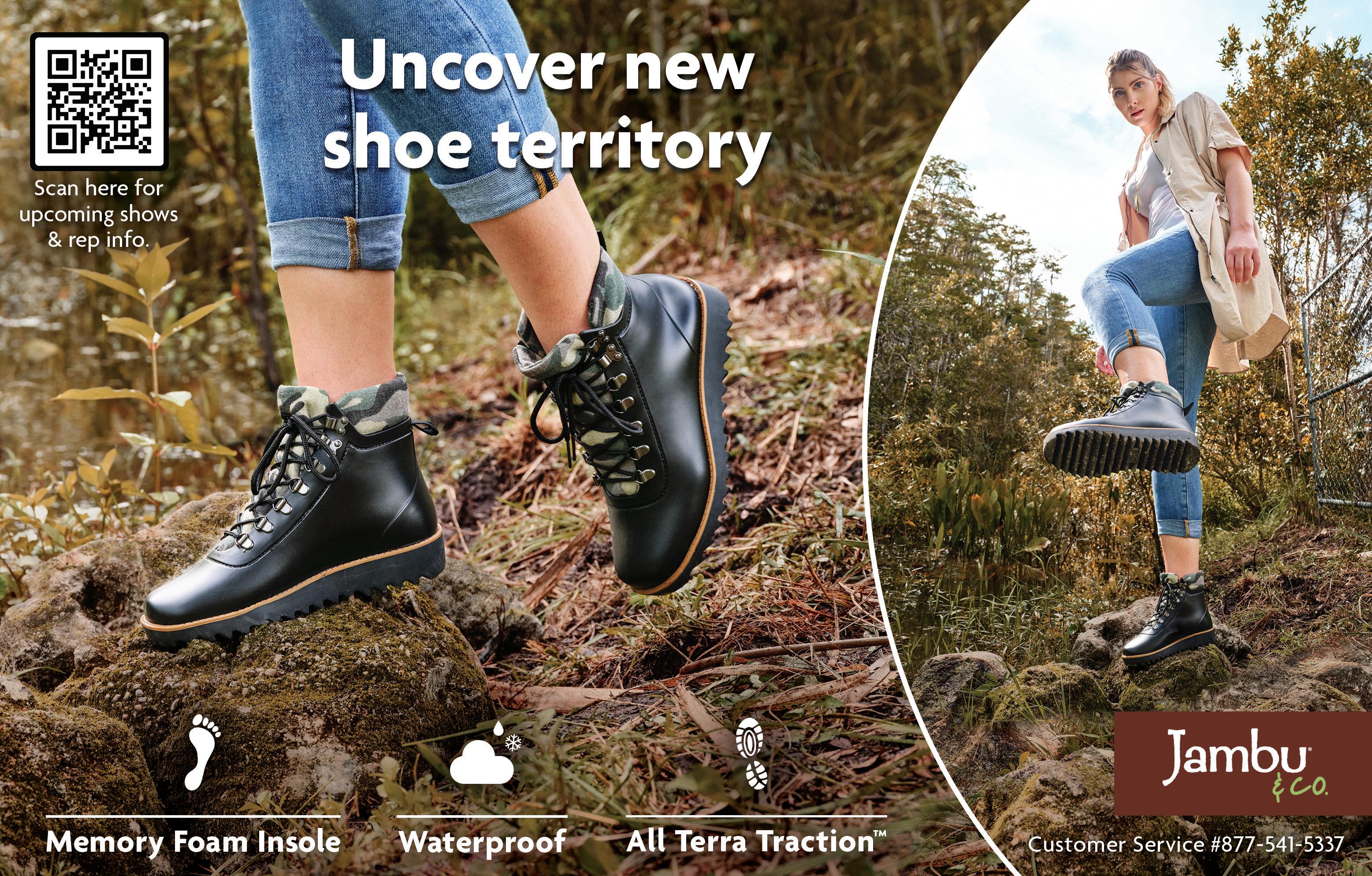
‘Hey, I have this extra program that I need to fill and I thought about what you guys did for us last year and I want to give you the opportunity.’
Nonetheless, 2021 was tough.
It was. We had a pretty aggressive budget, and we came in 15 percent short of our projections. Halfway through the year, I started messaging our team that our goal was to just break even. But we happily blew past that and made a profit—just not a record one. But I look at 2021 as a year that really built our character as a company. While there wasn’t a celebration at the end of the year, we held it together. Sure, there were a lot of missed programs. Snow boots, for example, showed up in January that should have arrived three months earlier. And with product sitting on the ocean for so long, other problems have arisen that we never even thought of before. Mold became a huge issue after sitting in a container for 90 to 120 days. Also, when factories have so many orders that they don’t know what to do with, their quality tends to drop. They can demand higher prices for lesser quality, because they have 10 other customers who’ll buy that inventory at that price tomorrow. Every day we’d come into the office and it’d be like what else could possibly go wrong? That was 2021. But we just kept rolling with the punches.
Has anything changed that makes you more optimistic about 2022?
We look to be dealing with supply chain issues through at least most of this year. But at least it won’t be a shock. I think retailers and us have gotten used to it and know how to weather it better. We’re doing things to mitigate those risks, and I’m hopeful 2022 will end at a much better place than 2021.
What are you doing to mitigate supply chain risks?
We’ve moved up our seasons by six months in order to secure the production space. We’re also extending our demand planning out quite a bit further. We’re utilizing smaller ports, which can unload goods a lot faster. For example, the port of Everett is 35 minutes north of Seattle and unloads in a day or two versus Seattle where it’s 60 days. We’ve also added staff to our supply chain department because it’s such a critical function of our business now. In the past, supply chain wasn’t something we thought much about. You book a container, no problem. Now, a lot more logistics are involved. Lastly, since the trade war with China we’ve been discussing the need to diversify our sourcing partners, but the pandemic has prevented us from doing scouting trips. Our five-year goal is to be producing in China, mostly likely Vietnam and the U.S.
When, where and what types of products do you plan to make in the U.S.? Some of our kids’ PVC product, like our light-up boots, can be done with injection machines. It’s a pretty low labor-intensive production. One of those machines, operated by two workers, can make about 3,000 pairs a day. But we need to import those machines first. That’s why it’s a five-year plan, which is tied to our goal this year to secure a new facility. We want to purchase a building where part of that space would be used for injection production.
Will the costs be competitive with overseas production?
Yes, plus the shipping costs will be a lot lower. It’s a high duty product also, so that offsets price increases. Obviously, we need people for packaging and some trim work, but the benefits outweigh importing.
Despite all these challenges and unknowns, are you optimistic 2022 will be better for Washington Shoe Company?
Yes. While we can’t change the macro environment and can only handle what we can affect, I’m more optimistic heading into this year than any year >45
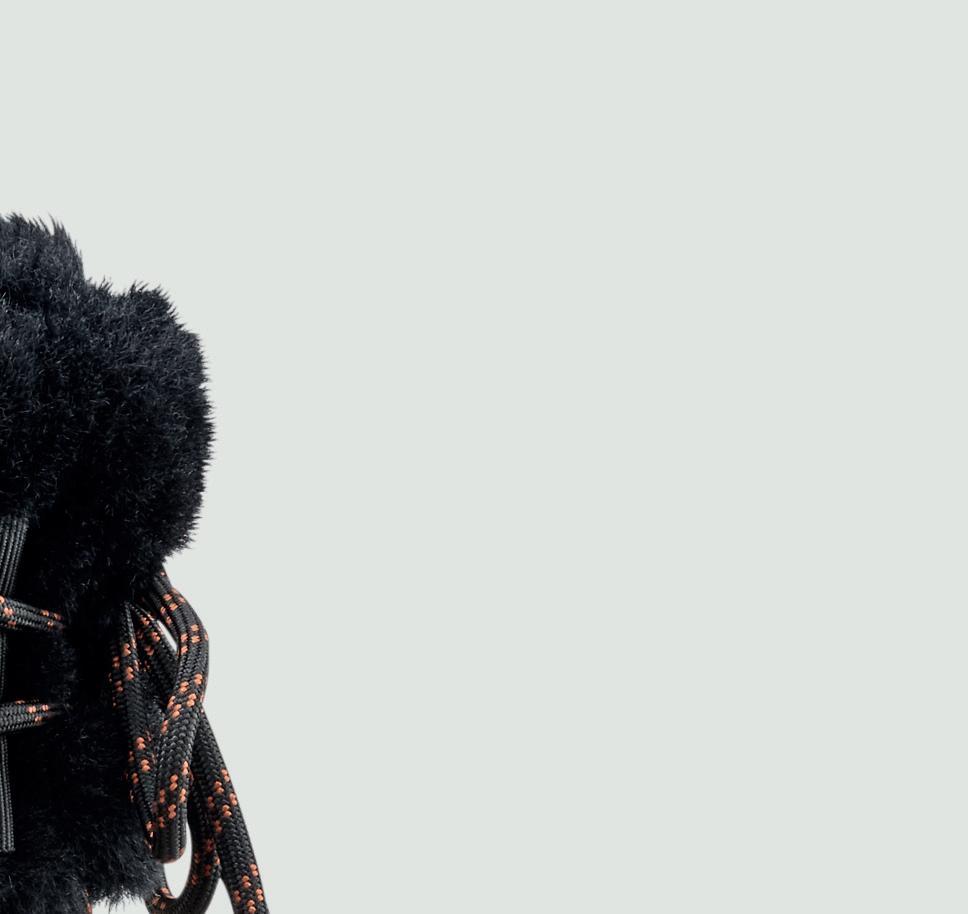
Off the cuff.

MAGIC LV Atlanta Shoe Market MAGIC NYC
